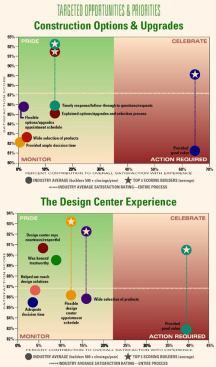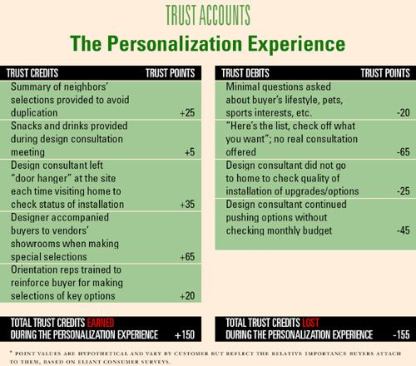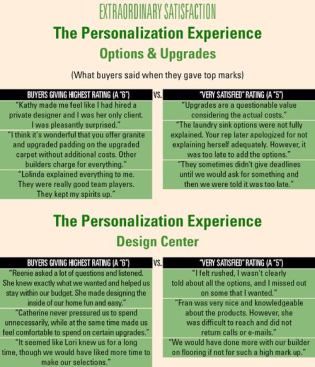THE THRILL OF CUSTOMIZING A NEW home should arguably be the most exciting and gratifying part of the home buying ride. It is one of the primary reasons consumers say they decide to buy a new rather than a resale home. However, ongoing surveys of new home buyers continue to identify a significant level of dissatisfaction with this part of the home buying experience. Part of that dissatisfaction results from the continuing disconnect between what builders want to accomplish in the selection process and what customers want:
The Traditional Builder’s Objectives:
The Buyer’s Objectives:
The disconnect between builders and buyers takes shape in the disappointments and complaints buyers most often express about the design and options selection experience, including:
Builders who concentrate on their processes and priorities without considering their customers’ objectives often find their buyers’ perceptions of the experience to be surprisingly negative. In particular, buyers who believe the experience feeling that the builder was charging unrealistic prices—for items priced considerably lower at local retailers—will have serious doubts about the trustworthiness of the builder.
Think outside in. Builders must decide what kind of experience they want their buyers to have and what kind of emotional reactions they want to generate. Most builders first determine what their process will look like and then try to fit the buyer experience into it. If the underlying purpose of providing an options program is anything other than to delight the customer, builders should rethink their program.
Engineer positive responses. Builders should identify the steps where they are most likely able to elicit a positive emotional response from each buyer. Begin by cataloguing the “required touch points” (RTPs)—points in the process where interaction with the buyer is already necessary—and look for ways to make those moments exceed most buyers’ expectations. Then develop a list of planned, but unannounced, “extraordinary touch points” (ETPs)—unexpected acts of attention or personalized flourishes—that add something special and positive to the buyer’s experience.
Re-establish the goal. After defining the intended experience, builders then need to make sure every staff member understands that the goal of the design and options process is to absolutely delight buyers. It’s not about the builder’s process any-more, nor is it about the products. It’s the buyer’s experience that matters. Period.
For many builders, converting from a traditional process, in which procedures and products are the most important considerations, to an experience-centric model is not easy. But clearly, builders are making the transition using a variety of approaches, according to new research commissioned by BIG BUILDER magazine and other research conducted by Eliant.
Among the principles and ETP activities being used by high-volume builders that earn top customer satisfaction ratings when it comes to the option and upgrade experience:
Prices should not exceed competitive retail prices by more than 15 percent to 20 percent; and prices should always be explained so buyers understand the benefits and value of installation and warranty support. Builders who try to squeeze each buyer to achieve unrealistic margin requirements do so at great peril to their reputation.





